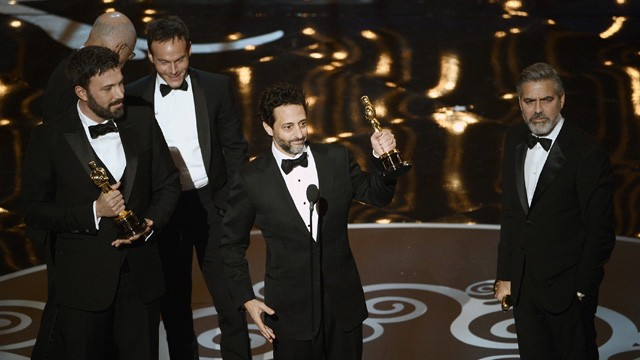
The Bigger Picture
[flickr id=”8599931660″ thumbnail=”medium” overlay=”true” size=”original” group=”” align=”none”]
The record is crooked—let’s set it straight: It was on set last week, when one of the graduate directing students tried to differentiate between the role of producer and that of director. ‘Directing is more creative, producing is more logistics…’
From that first sentence, my ears bled. It troubles me that even within a film school there is a lack of understanding, but is it any wonder when you look at the credits on any film, and an assortment of associate producers, line producers, co-producers, producers, and executive producers flash before your eyes. Thus, it’s not entirely wrong for someone to assume a producer deals with logistics. That, however, is the line producer, the person responsible for managing the physical production of a film. That person answers to the producer, the main creative driving force behind a film.
In the traditional studio system, it is the producer who finds material and develops the story with a writer, resulting in a working script. Then, as the script is ready to move into pre-production, the producer will identify and hire the other creative roles, such as director, director of photography, production designer, editor, sound designer, and composer, that are in keeping with the producer’s vision, and guide the process. This is why the Best Picture award is the producer’s award.
[flickr id=”8599931680″ thumbnail=”medium” overlay=”true” size=”original” group=”” align=”none”]
In independent film, the lines become somewhat blurred. It is here that it can work one of two ways. Firstly, it can work just as above; the producer might secure funding and take a film through production in a manner not unlike the studio system. Or, a director might have written a script and subsequently hired a producer to physically produce the film. In this case however, this is, more often than not, a line producer.
Producing, by nature, is a practical field of study. It prepares you with the more hands-on filmmaking skills to hit the ground running. Columbia’s Film & Video – Creative Producing MFA provides you the logistical know-how to take a film through physical production, but fundamentally the program is grounded in story. Being a producer is all about having material, whether that is original material you develop or material you acquire. And by applying the story structure and narrative techniques learned at Columbia throughout the development process, that slate of material is what you will take with you.
[flickr id=”8599931678″ thumbnail=”medium” overlay=”true” size=”original” group=”” align=”none”]
By virtue of reading this, you’re probably more aware of what a producer is, but just beware not everyone else is and you’ll have to be a little patient at times. Someone I greatly admire recently told me that to succeed in film you need three things. Firstly, great faith—in yourself and your project. Next, great doubt—be willing to listen to feedback so your story is the best that it can be. And finally, great determination—to keep moving forward besides the naysayers. Though it might be easy to become sidetracked by trivial matters, bear in mind the bigger picture. There will always be trivial matters to rise above, but focus instead on your slate of material. That, after all, is what will win you the Best Picture award someday.
